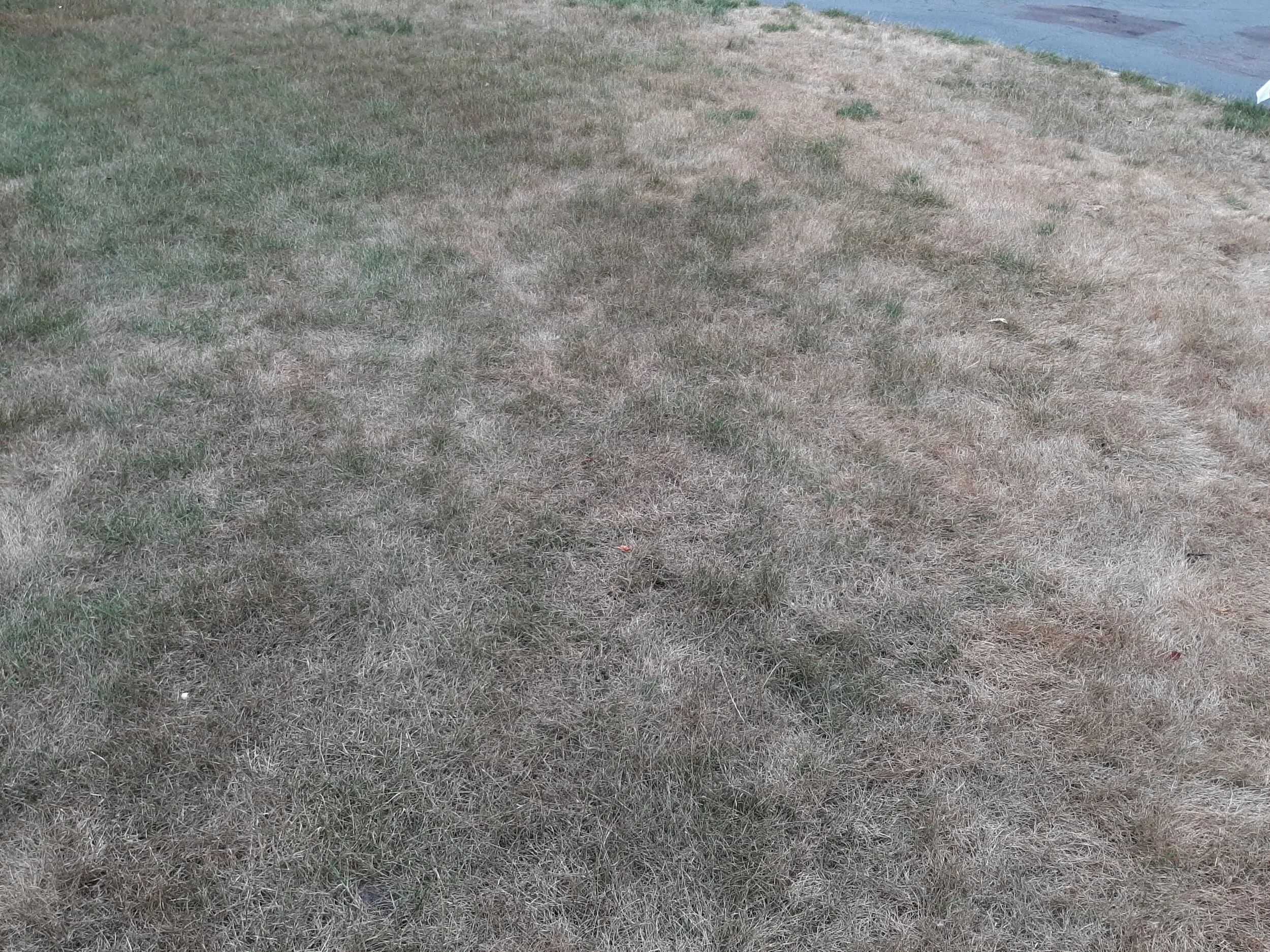Drought Tempers Fall Lawn Care
By Kim Sullivan, Anoka County Master Gardener
As of late July, Anoka County was experiencing severe drought conditions, and rainfall was approximately three inches below normal according to drought.gov. Luckily, a typical summer in Minnesota is not the time to do much lawn care beyond mowing to a height of around four inches and ensuring lawns receive about one inch of water every 10-14 days. Letting your grass go dormant is also an option, which is normal for cool-season grass. While drought conditions do add stress to our lawns, there are steps you can take in the fall to help them recover.
A University of Minnesota study in 2018 found that dormant lawns can survive at least 64 days without measurable rainfall when followed by 28 days of consistent watering at the rate of one inch twice a week. If this summer’s drought conditions continue, begin watering an inch of water every 10 days ahead of fall fertilizing or broadleaf weed treatments. This brings your lawn out of dormancy and actively growing so that grass takes up nutrients and weeds will be affected by herbicides. Other drought-related issues won’t be fixed solely by watering, and they could leave your lawn with dead patches as the weather cools in the fall. If you have drought-tolerant Kentucky bluegrass, you’ll see less drought damage than you will with perennial rye.
A prolonged outbreak of Dollar Spot, a fungus encouraged by high temperatures and humidity, occurred in the Twin Cities this summer. Dollar Spot caused brown patches that can usually be resolved as part of a regular fall fertilization plan. Around Labor Day, put down two-thirds of your total annual nitrogen treatment, using a fertilizer that has both nitrogen and potassium. If you typically apply 1.5 pounds of nitrogen per year, apply one pound per thousand square feet this fall. A good standard fertilizer has a grade of 24-0-12. University of Minnesota Extension web site offers additional fertilization guidelines: https://extension.umn.edu/lawn-care/fertilizing-lawns#when-and-how-much-to-fertilize-1256812.
Another drought-related issue is crown damage. The crown is the part of the grass plant that sends up new shoots. If there was a lot of activity on dormant crowns, they can die and create dead patches. You can repair crown damage by starting a watering program, raking out the dead grass, and adding starter fertilizer and seed in September.
September is also a good time to check for Japanese Beetle grubs (which leave brown patches in lawns) and to treat for broadleaf weeds, if needed. Grubs and weeds can each be controlled with natural treatments in addition to the traditional synthetic formulas. Any treatments should be limited to specific areas of concern, and lawns should be actively growing so that pesticides can be taken up properly. Both synthetic and natural treatments have safety precautions, so always read and follow the application and safety guidelines on the package.
This has been a challenging year for our lawns, but they can recover with attention and proper care this fall.
Get advice from Anoka County Master Gardeners: anokamastergardeners.org.

